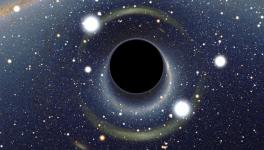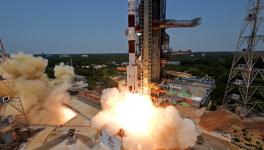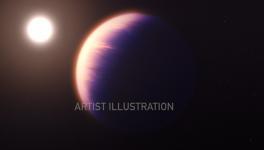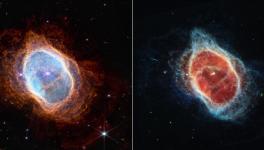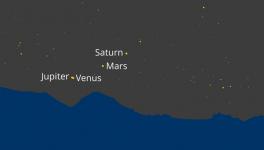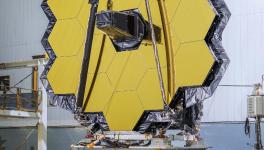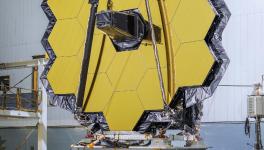James Webb Telescope Completes Arduous Path, Reaches Destination
The James Webb Telescope, designed and launched to unearth the secrets of the early stars at the beginning of the universe, has reached its destination one month after its launch. The James Webb Space Telescope was launched on December 25 at 7:20 AM EST from Europe's spaceport in French Guiana, South America. The telescope was launched on an Ariane 5 rocket.
The telescope is currently parked at a gravitationally stable spot known as the Lagrange point, L2. The Lagrange point is where all forces on the spacecraft balance out, and the craft remains at a point. The particular Lagrange point L2, where the James Webb telescope is now parked is around 1.5 million kilometres away from Earth, opposite to the Sun.
The L2 is a significant point to observe the sky with the aim for which James Webb telescope was launched as it will not have heat or light from the Sun, Earth or Moon. The James Webb telescope faces away from these objects with the help of a huge sun shield it contains. The telescope will be at extremely low temperatures because the Webb will have to observe the infrared light from extremely distant objects, and for detecting those faint heat signals, the telescope itself must be kept cold.
The Webb has several systems and protective measures to keep it cool and shield it from the heat of external sources. A sun shield protects the telescope from external heat sources like the Sun, moon, and Earth. The sun shield will cool the telescope to a temperature of minus 223 degrees Celsius. The other instruments in the Webb will also have cooler temperatures of varying degrees. The near-infrared instruments will work at minus 234 degrees Celsius, while the mid-infrared instrument will work at an even colder temperature of minus 266 degrees Celsius, according to NASA.
As the telescope has reached its parking spot, it will take another week for cooling everything before the engineers start the final mission of observing the sky. These will be conducted in two steps — first the 18 hexagonal segments making the telescope's primary mirror will have to be aligned with sophisticated precision. "They have to line up to within one five-thousandth the width of a human hair," said team member Lee Feinberg at NASA's Goddard Space Flight Center in Maryland in a January 24 press conference. This is expected to take around three months, after which another month will be needed to calibrate the scientific instruments before the first images are attempted.
"Everything we're doing is about getting the observatory ready to do transformative science," said mission scientist Jane Rigby at NASA Goddard. "We're a month in, and the baby hasn't even opened its eyes yet," he further commented. It is expected that the mission will begin around the end of June this year if everything goes fine.
According to Rigby, the first year of science has already been planned with more than 300 programmes of observing the sky. These programmes include examining exoplanets and looking deep into their atmosphere, which may reveal their composition and whether some of them have habitable conditions. Along with it, there will also be programmes that will peep into most distant galaxies in the observable range with the aim of studying how they formed and how they evolved with time. Apart from these, there will also be programmes to look into dark matters and dark energy.
James Webb differs in several aspects from its predecessors, like the Hubble telescope. The first is the capability of the observatory in its 6.5-metre wide golden mirror, which is three times wider than the primary reflector of Hubble. The enlarged reflector combined with the sensitive instrumentations that the Webb contains will enable astronomers to have a deeper look into the space and go back in time than was achievable ever before. The large reflector has 18 segments, each having tiny motors on the back. The reflector will have to be focused so that it can receive infrared wavelengths from the early stars of the universe. The motors will adjust the curvature of the reflectors.
With an expense of 10 billion US dollars, the Webb telescope is expected to have a lifetime of 10 years in space. The Webb has a mass of 6200 kilograms.
Get the latest reports & analysis with people's perspective on Protests, movements & deep analytical videos, discussions of the current affairs in your Telegram app. Subscribe to NewsClick's Telegram channel & get Real-Time updates on stories, as they get published on our website.









